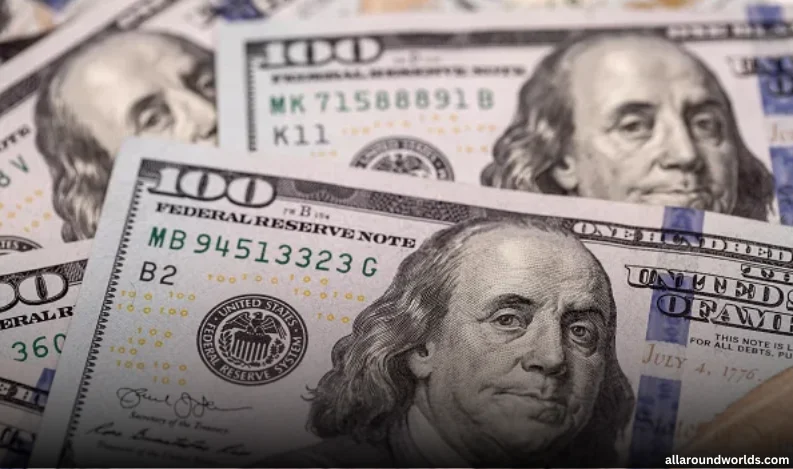
As the Dollar Falters, the World’s Central Banks Tread a Tightrope — Devalue Their Currency or Not
The U.S. dollar has been weakening steadily, and the resulting ripple effect on global currencies is presenting both opportunities and challenges for central banks across the world.
Dollar Weakness Drives Capital Flight
Uncertainty surrounding U.S. economic policy has spurred investors to withdraw from dollar-denominated assets. The U.S. dollar index has declined by more than 9% so far this year, and analysts expect further losses.
According to Bank of America’s latest Global Fund Manager Survey, a net 61% of respondents expect a continued drop in the dollar over the next 12 months — the most bearish forecast in nearly two decades.
The widespread exit from U.S. assets reflects a broader erosion of confidence and has contributed to increased risks of imported inflation as the dollar weakens.
“Most central banks would be happy to see 10%-20% declines in the U.S. dollar,”
— Adam Button, Chief Currency Analyst, ForexLive
Global Currency Movements
The dollar’s decline has lifted a variety of other currencies. Safe haven currencies such as the Japanese yen, Swiss franc, and the euro have all gained strength, appreciating by more than 10% to 11% year-to-date, according to data from LSEG.
Other currencies such as the Mexican peso (+5.5%), Canadian dollar (+4%), Polish zloty (+9%), and Russian rouble (+22%) have also risen against the dollar. However, not all currencies have followed suit.
The Vietnamese dong and Indonesian rupiah hit record lows earlier this month. The Turkish lira also fell to an all-time low, while China’s yuan briefly reached a record low before recovering.
Breathing Room for Rate Cuts?
A weaker dollar is generally welcome by most central banks, as it reduces the cost of servicing dollar-denominated debt and lowers the price of imports — helping to tame inflation and potentially giving space to reduce interest rates.
“Most central banks would be happy to see 10%-20% declines in the U.S. dollar,”
— Adam Button, ForexLive
Button emphasized that prolonged dollar strength had been a longstanding challenge for countries with both hard and soft dollar pegs.
In emerging markets, which carry significant dollar-denominated debt, a softer dollar reduces the real debt burden. Additionally, it allows local currencies to strengthen, easing inflationary pressures and potentially giving central banks more policy flexibility.
Mixed Impacts and Risks of Devaluation
However, while a stronger domestic currency may ease inflation, it poses challenges for export-driven economies — particularly in Asia — already dealing with heightened exposure to U.S. tariffs.
“Currency devaluation is likely to be more of an active consideration across emerging markets, particularly in Asia,”
— Nick Rees, Head of Macro Research, Monex Europe
Rees noted that any potential devaluation strategy will require careful handling to avoid triggering capital outflows and financial instability.
“Emerging markets face high inflation, debt, and capital flight risks, making devaluation dangerous,”
— Wael Makarem, Financial Markets Strategist Lead, Exness
Devaluation also carries the risk of being perceived as a trade tactic by the U.S. government, which could provoke retaliatory measures.
Alex Muscatelli, Director of Economics at Fitch Ratings, observed that central banks in emerging markets may hesitate to cut rates if doing so increases pressure on domestic firms with foreign-denominated debt.
“Indonesia’s central bank is unlikely to cut rates significantly due to recent currency volatility,” he said. “However, Korea and India might have room for reductions.”
“For now, it seems the preferred action is avoiding a currency war that would only add more instability to the local and global economy.”
— Brendan McKenna, Wells Fargo
Europe and Switzerland Move Cautiously
The European Central Bank (ECB) has taken advantage of easing inflation to lower rates by 25 basis points at its April policy meeting. It signaled that inflation is aligning with its 2% medium-term target.
Meanwhile, the Swiss National Bank continues to deal with a strong franc — an ongoing issue for more than a decade. Switzerland’s export-driven economy is particularly sensitive, as over 75% of its GDP comes from goods and services exports.
“If capital continues to flow in, they may have to take drastic measures to devalue,”
— Adam Button, ForexLive
Currency Devaluation: A Tool of Last Resort
While central banks theoretically have the ability to weaken their own currencies, few are likely to act in the current climate. The inflationary risks associated with devaluation — particularly in a tariff-laden trade environment — are significant.
“Devaluation poses the risk of stoking inflation and will make monetary authorities cautious,”
— Brendan McKenna, Wells Fargo
According to McKenna, the decision to pursue currency weakening depends on multiple factors: foreign exchange reserves, external debt exposure, trade balance, and sensitivity to imported inflation.
“Export-oriented countries with sufficient reserves and lower reliance on foreign debt would have more room to devalue – but even those are likely to tread carefully,”
— McKenna added
Trade negotiations may also influence currency strategies. If countries successfully reduce tariffs through diplomatic channels, the urgency to weaken currencies would decline.
Yet the potential for rising protectionism still exists. In that scenario, the prospect of competitive devaluation could re-emerge.
“But for now, it seems the preferred action is avoiding a currency war that would only add more instability to the local and global economy,”
— Brendan McKenna, Wells Fargo
Key Points:
-
Uncertainty around U.S. policymaking has triggered a flight from the U.S. dollar and Treasurys, weakening the dollar index by over 9% this year.
-
The decline in the dollar has led to appreciation in safe haven currencies such as the Japanese yen, Swiss franc, and euro.
-
Currency devaluation is becoming a pressing issue for emerging markets, particularly in Asia.
-
High inflation, external debt, and risk of capital flight make devaluation a dangerous prospect for developing economies.



Recent Comments: